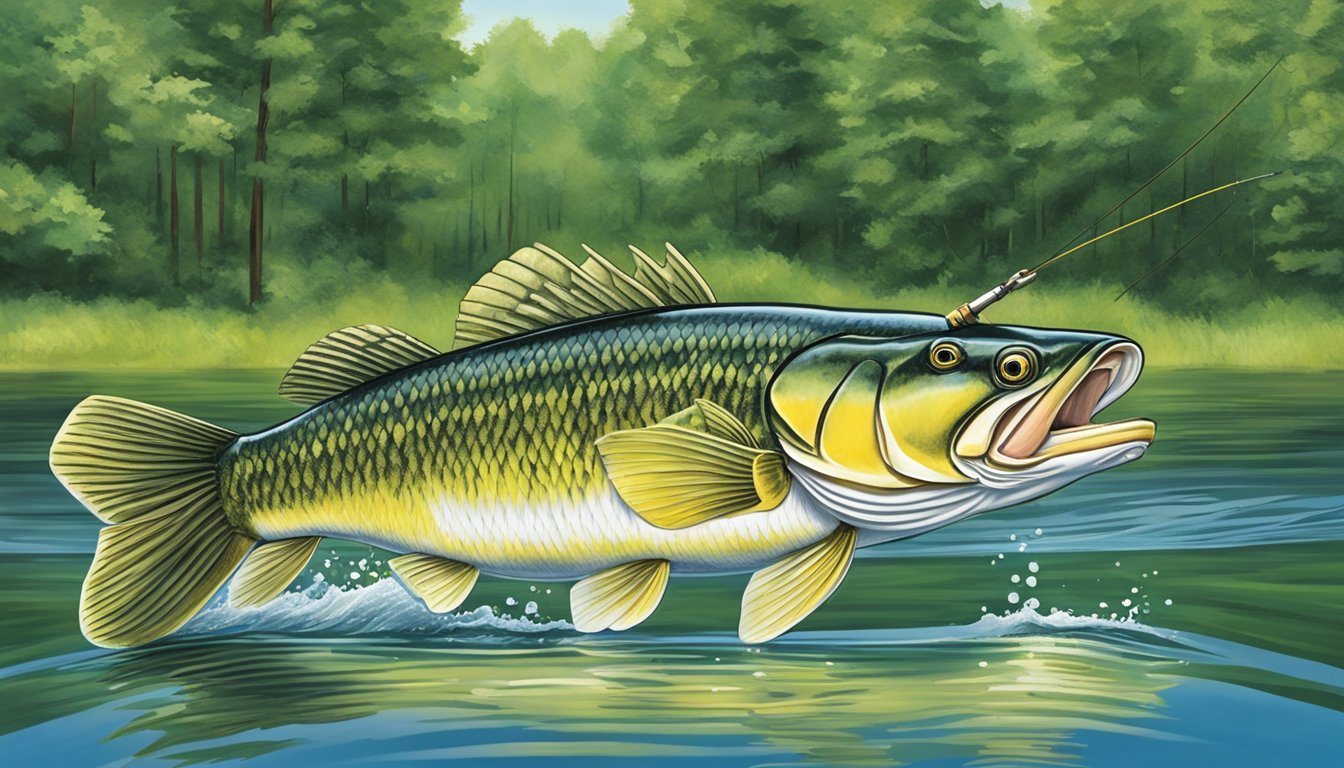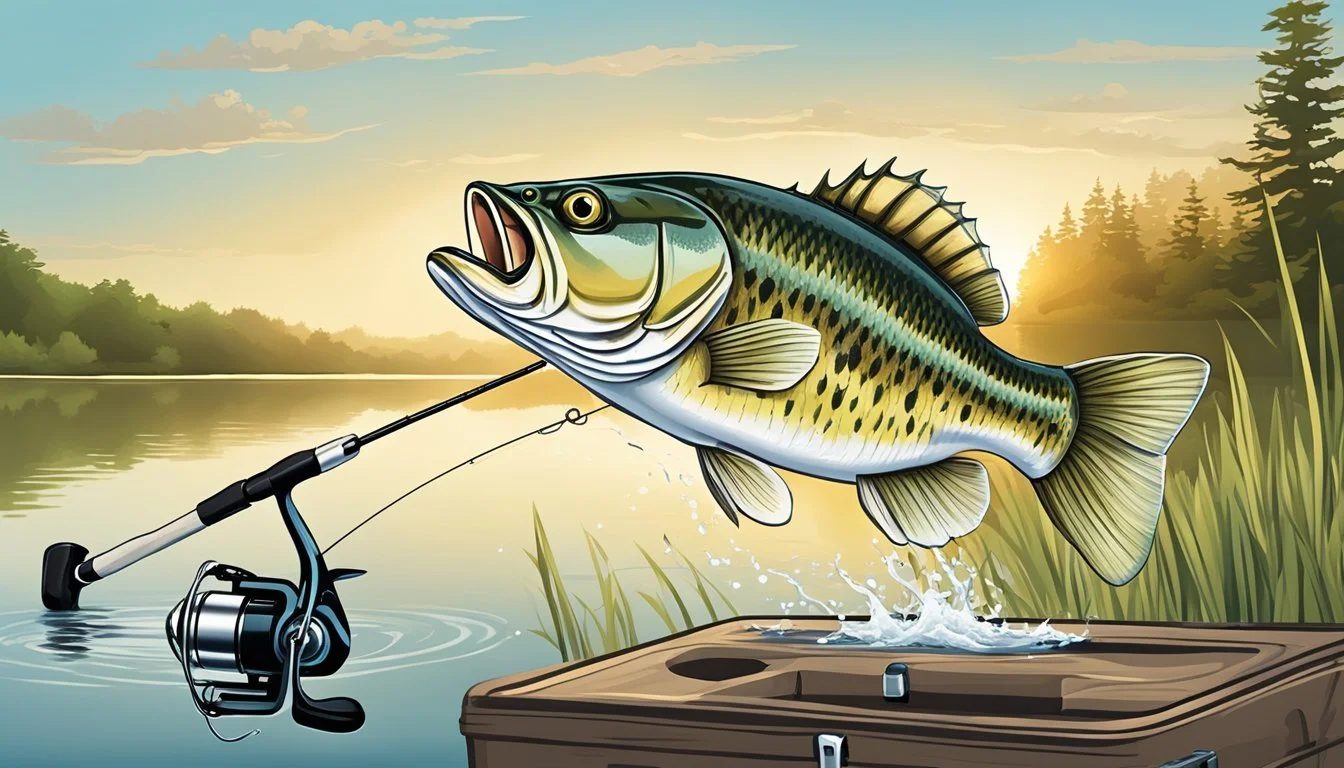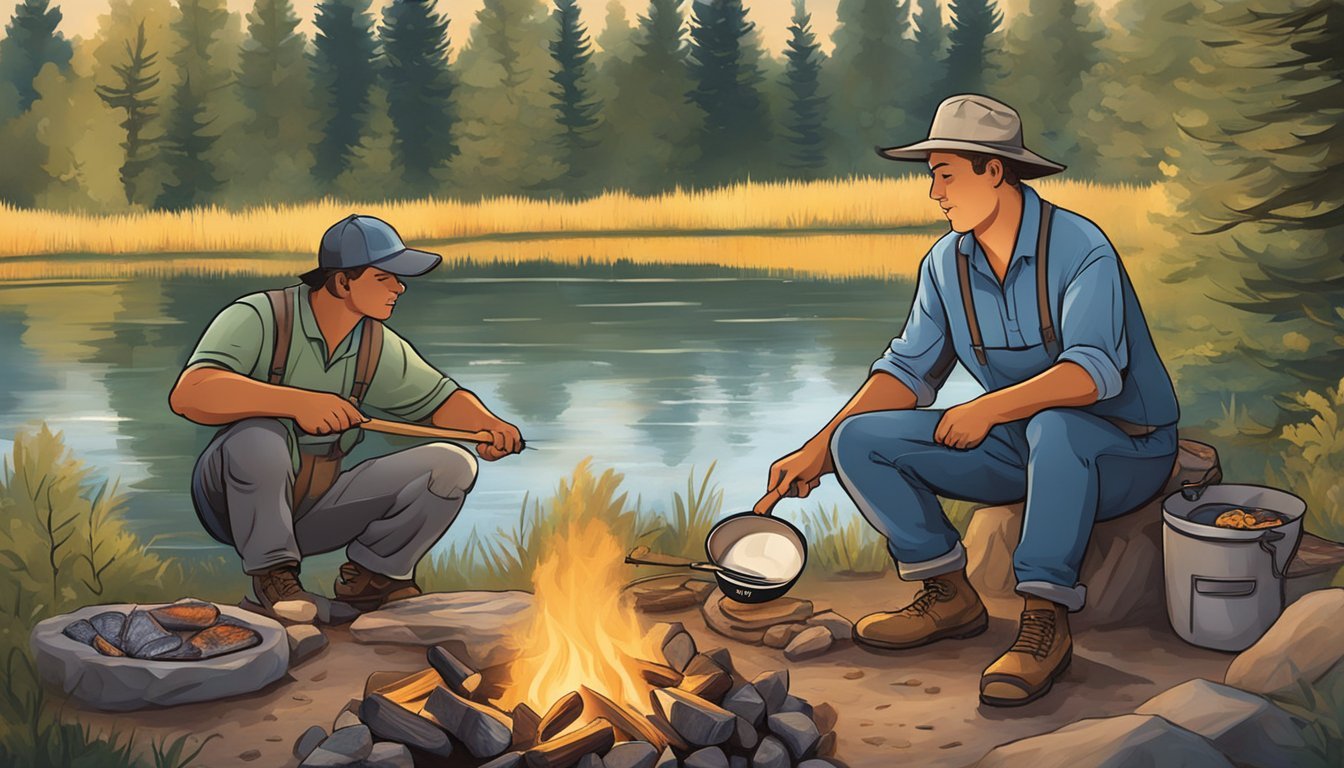Best Fish to Catch and Eat in Wisconsin
A Gastronomic Adventure
Wisconsin, with its rich network of freshwater lakes and waterways, offers an abundant assortment of fish (What wine goes well with fish?) that are both a delight to catch and delicious to eat. Enthusiasts can relish the experience of fishing in the state's diverse aquatic environments that range from the vast waters of the Great Lakes to serene inland lakes and streams. Fish such as the locally harvested wild fish from the Great Lakes boast an epic flavor that is highly sought after, making such catches a prized component of the culinary scene in the region.
For anglers looking for a trophy catch or a tasty meal, the northern pike in Lake Winnebago presents an excellent opportunity. This large lake, famed for its monster pike, provides various fishing spots which include expansive shallows and weed beds that are ideal pike habitats. Other species such as largemouth bass thrive in the structures provided by Wisconsin’s lakes, offering optimal fishing windows throughout the year.
Consuming fish from Wisconsin's waters also comes with the benefit of knowing that they are a healthy choice when safe-eating guidelines are followed. Inland waters have guidelines distinct from the Great Lakes, and certain locations have additional advisories. Anglers are recommended to stay informed about these guidelines to enjoy their catch safely. With its abundant fish populations and responsible consumption practices, Wisconsin stands as a remarkable destination for those who cherish the tradition of angling and the enjoyment of fresh, local fish.
Wisconsin's Aquatic Ecosystems
Wisconsin's aquatic environments are vast and varied, offering an array of fishing experiences from the tranquil streams to the vast waters of the Great Lakes. Understanding these ecosystems is crucial for both conservation and enhancing fishing experiences.
Lakes and Rivers
Wisconsin's 15,000-plus lakes and numerous rivers make it a fishing haven. Inland waters boast species like the Walleye, particularly famed for their population in the north-central regions, though their numbers have seen changes due to multiple ecological factors.
Streams and Backwaters: Offer additional habitats, as these smaller bodies provide unique fishing opportunities and support a diverse set of species.
Fox River: Forms part of a larger system that includes Green Bay of Lake Michigan, known for fish like Northern Pike.
Mississippi River: Along Wisconsin's western border, large enough to possess varied ecosystems within its backwaters, often well-stocked with fish like Bass and Catfish.
Great Lakes Region
Wisconsin's segment of the Great Lakes includes parts of Lake Superior and Lake Michigan, both known for their ecological and economical significance.
Lake Superior: The largest freshwater lake in the world by surface area is celebrated for its clean waters and trout fishing.
Lake Michigan: Offers a different set of challenges and rewards, where anglers might catch Salmon or Trout, with local efforts focused on sustainable fishing practices.
Each of these aquatic regions is subject to regulations that aim to preserve the delicate biological balance and ensure that fish populations remain for future generations of anglers to enjoy.
Popular Fish Species in Wisconsin
Wisconsin's abundant freshwater ecosystems are home to a diverse range of fish species, making it an ideal destination for anglers. This section will guide you through some of the most sought-after species to catch and enjoy in Wisconsin waters.
Walleye
The walleye is a prized catch known for its fine-flavored, white, and flaky flesh, commonly targeted by sport and recreational fishers. Wisconsin's Walleye Management Plan actively supports its population, ensuring sustainable fishing experiences.
Trout Species
Trout species in Wisconsin include the brook trout, rainbow trout, and brown trout, each unique in habitat and angling appeal. Brook trout, the state's native trout, thrives in colder streams, while brown and rainbow trout are popular for their fighting spirit.
Perch Varieties
Anglers in Wisconsin often seek out yellow perch and white perch. Both species are valued for their delicate taste, with the yellow perch being especially popular for frying.
Catfish and Bullheads
The catfish family, specifically channel catfish and flathead catfish, are robust species that can grow to significant sizes, providing both a challenging catch and a hearty meal. Bullheads are smaller but similarly enjoyable to fish.
Largemouth and Smallmouth Bass
Both largemouth bass and smallmouth bass are top freshwater game fish in Wisconsin. Largemouth bass tend to inhabit warmer waters with more vegetation, whereas smallmouth bass prefer cooler, clearer waters with rocky substrates.
Sturgeon Types
Wisconsin hosts freshwater giants like the lake sturgeon. The state has a storied tradition of sturgeon spearing, a unique angling experience, with strict regulations to protect this prehistoric species.
Other Notable Species
Other notable species include the musky, which is the official state fish of Wisconsin and a trophy catch for many anglers. Northern pike offers an exciting challenge with their aggressive strikes. Panfish such as bluegill and crappie are abundant and provide easy fishing opportunities for all ages. For an exceptional delicacy, the lake whitefish, with high omega-3 content, is a stellar catch in the Great Lakes region.
Fishing Regulations and Conservation
With the combined goals of public health protection and ecological sustainability, fishing regulations and conservation efforts in Wisconsin are articulated by the Wisconsin Department of Natural Resources (DNR). They focus on managing fish populations, keeping anglers safe, and maintaining the quality of the aquatic ecosystem.
Licensing Requirements
Wisconsin DNR mandates that anglers must possess a valid fishing license to fish in state waters. This serves as both a regulatory measure for fish population control and a revenue stream for conservation programs. Specific licenses are required for different types of fishing, such as trout or salmon angling.
Fish Consumption Advisories
Advisories are issued to help anglers make informed decisions about consuming their catch. Contaminants like mercury and PCBs can accumulate in fish, leading to consumption advisories for certain species in various water bodies. Researchers closely monitor these contaminants and update guidelines accordingly to ensure public health.
Mercury: A common advisory for inland waters.
PCBs: Particularly noted in the Great Lakes and some larger rivers.
Species Protection
Regulations are in place to protect certain fish species during critical times, such as spawning seasons, to prevent overfishing. Size and bag limits vary for different species, as do seasonal restrictions. These measures help maintain a diverse and healthy population of native fish.
Protected Species: May include sturgeon, walleye, and trout, among others.
Seasonal Restrictions: Open and closed seasons are enforced to allow for species recovery.
Fishing Techniques and Gear
When targeting the diverse aquatic life in Wisconsin, an angler's success is often a result of the appropriate gear selection and mastery of various fishing techniques. Staying informed about catch and release practices ensures sustainable fishing for future generations.
Gear Selection
Anglers should consider the species they're targeting to select the right gear. For instance, lightweight line and small tear-shaped jigs are suitable for ice fishing for panfish. Conversely, pursuing Largemouth Bass warrants heavier tackle. Essentials include:
Fishing rod and reel: Choose based on the target species; light setups for panfish, heavier ones for bass.
Hooks and lures: Smaller hooks baited with grubs for panfish; larger, robust lures for bass and walleye.
Line: Monofilament for general use; braid or fluorocarbon for specific scenarios.
A valid fishing license is required for all anglers in Wisconsin, with the option for residents and non-residents to purchase different term lengths.
Fishing Techniques
Each species responds to different techniques, often influenced by season and habitat:
Ice Fishing: Deeper water with aquatic vegetation is prime for winter panfish.
Fly Fishing: Effective for trout in streams and rivers, utilizing hand-tied flies to imitate insects or baitfish.
Casting and Trolling: Common for bass and predator fish, where the angler casts out or tows the lure behind a moving boat.
Understanding fish behavior and habitat is crucial for selecting the right technique.
Catch and Release Practices
Ethical catch and release practices are vital for conservation. They include:
Using barbless hooks to minimize injury.
Handling fish with wet hands to protect their slime coating.
Quick release: Reducing the time a fish is out of water is crucial for its survival after release.
Catch and release ensures the health of fish populations and prolongs the enjoyment of the sport.
Preparing and Consuming your Catch
When an angler in Wisconsin lands a fish, they're at the junction of recreation and nutrition. This section explores the types of fish you can eat, necessary health precautions, and the nutritional value of consuming your catch.
Identifying Edible Fish
Anglers in Wisconsin can look forward to a variety of fish that are both safe and enjoyable to eat. Species like bluegill, crappie, yellow perch, and walleye are prized for their flavor. Each species has a distinct taste and texture, and they are often targeted for meals due to their lower content of unhealthy saturated fats and high protein value. It's crucial to identify the fish correctly to ensure it's an edible species and to follow state regulations concerning size and catch limits.
Health Advisories and Safe Consumption
The Wisconsin Department of Natural Resources (DNR) provides an online query tool for site-specific fish advisories, helping anglers identify which fish are safe to eat and in what quantities. Mercury and PCBs are common contaminants that can accumulate in fish, varying by water body and fish species. Following these advisories ensures that you limit exposure to these substances. Fish should be cleaned and cooked properly to reduce potential pollutants. For example, trimming fat and skin can decrease the amount of contaminants ingested.
Safe Consumption Guidelines
Mercury: Pay close attention to the size of the fish; larger and older fish may have higher levels of mercury.
Frequency: The DNR provides clear guidelines on how often different species can be safely consumed, especially by vulnerable populations such as pregnant women and children.
Nutritional Benefits
Fish caught in Wisconsin's waters are not just a local delicacy but are loaded with health benefits. They are excellent sources of high-quality protein and are typically lower in saturated fat compared to land-based meats. Moreover, they are among the best natural sources of omega-3 fatty acids, which are essential for heart health and cognitive function.
Nutritional Profile of Common Wisconsin Fish*
Fish Species Omega-3 Fatty Acids Protein (per 3 oz cooked) Saturated Fat Bluegill High 21g Low Crappie Moderate 20g Low Yellow Perch Moderate 21g Low Walleye High 22g Low
*Values are approximate and can vary
By consuming local fish, Wisconsin residents and visitors can enjoy meals that fit into a balanced and nutritious diet.plan.
Sustainability and Environmental Impact
In Wisconsin, the sustainability of fish populations and the environmental impacts of fishing are of paramount concern to ensuring the health of local ecosystems and the availability of resources for future generations.
The Impact of Fishing on Wisconsin's Ecosystems
Wisconsin's diverse aquatic habitats are home to numerous fish species, some of which are native, while others are commercially harvested. Fishing activities, particularly when not managed properly, can lead to overfishing and the depletion of fish populations. Overfishing risks upsetting the ecological balance by removing key species that play critical roles in maintaining healthy water systems. Efforts to monitor fish populations and enforce regulations are essential to protect these natural resources. Environmental changes due to climate also pose significant challenges, affecting fish habitats, breeding cycles, and availability.
Sustainable Fishing Practices
Wisconsin's approach to sustainable fishing practices includes various strategies that aim to minimize the environmental impact while ensuring the continued availability of fish for both commercial fishing and recreational anglers.
Seasonal Restrictions: They enforce seasonal closures to protect fish during spawning periods.
Size Limits: Regulating size limits to ensure only mature fish are caught, allowing younger populations to thrive.
Catch Limits: Establishing catch limits to prevent overharvesting of fish populations.
Adherence to these practices not only aids in the conservation of fish populations but also supports the subsistence needs of native and local communities who rely on fishing as a cultural practice and food source. Responsible commercial fishing operations are imperative to maintaining the vitality of Wisconsin's fish, providing environmentally friendly seafood options to consumers, and preserving the ecosystems for which they serve as integral components.
Fishing Seasons and Events
In Wisconsin, anglers find prime fishing conditions at various times of the year, marked by official seasons and complemented by community activities such as tournaments.
Annual Fishing Seasons
Spring and Fall: These seasons are regarded as the best times for fishing in Wisconsin, when a wide variety of species are active. Specifically, the spring months offer excellent fishing conditions as fish spawn, making them easier to catch.
Summer: Fishing during the summer months, particularly from April to September, offers a chance to target species like smallmouth bass and northern pike, especially in rivers like the Crawfish River in Jefferson.
Winter: The state also offers unique ice fishing opportunities, with specific seasons for lake sturgeon, such as spearing from February 10 to February 25 and hook-and-line from September 7 to September 30.
Free Fishing Weekends: Twice a year, on January 20-21 and June 1-2, residents and visitors can fish without a license, providing excellent opportunities for everyone to participate.
Best Fishing Spots:
Lake Michigan (Port Washington): April to October for Chinook salmon and lake trout.
Crawfish River (Jefferson): April to September for smallmouth bass and northern pike.
Fishing Tournaments and Community Events
Local Tournaments: Several local fishing tournaments occur annually in Wisconsin, attracting both amateur and professional anglers. These events often focus on specific species or bodies of water, allowing participants to showcase their skills and local knowledge.
Community Fishing Events: Free fishing weekends and community-organized events provide great opportunities for family and social fishing outings. These events not only stimulate interest in the sport but also help foster community spirit and conservation awareness.
Research and Studies
The quality and safety of fish populations in Wisconsin hinge on ongoing research and studies, focusing on aspects from population dynamics to contamination levels in fish. This section delves into the specifics of fish population research, water quality monitoring, and invasive species studies.
Fish Population Research
The Wisconsin Department of Natural Resources (DNR) conducts comprehensive research on aquatic habitats and fish species within the state. This research is crucial for determining population sizes, growth rates, and the overall health of fish communities. The data collected informs regulations and supports sustainable fishing practices.
Species Monitored: Walleye, Trout, Northern Pike, among others.
Key Parameters Studied: Population density, reproductive success, growth patterns.
Water Quality Monitoring
Water quality is directly linked to the health of fish and the safety of consuming them. Continuous monitoring of Wisconsin's bodies of water checks for contaminants such as mercury, polychlorinated biphenyls (PCBs), and perfluoroalkyl and polyfluoroalkyl substances (PFAS), which can accumulate in fish.
Contaminants Tested:
Mercury: A neurotoxin affecting the nervous system.
PCBs: Industrial compounds linked to cancer and other health issues.
PFAS: Persistent chemicals affecting liver, thyroid, and reproductive health.
Invasive Species Studies
Invasive species pose a significant threat to local fish populations and the ecosystems of Wisconsin's lakes and rivers. Research in this area is aimed at understanding the impact of invasive species and developing strategies to manage and control their spread.
Common Invasive Species: Zebra Mussels, (What wine goes well with mussels?) Round Gobies, Asian Carp.
Management Efforts: Public education, control programs, and habitat management.
These studies form the backbone of fisheries management and conservation in Wisconsin, ensuring that decisions are data-driven and reflect both ecological and public health perspectives.






